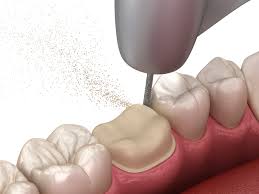DENTICA ORTHODONTIC AND MULTISPECIALITY DENTAL CLINIC
Patient's Guide to Dental procedure
Part 4: Tooth preparation for crowns
Dr. Shruti Chouragade
8/18/20252 min read


Crown Procedure:
This guide is intended to inform you about what to expect when cap is done -
1. Initial Consultation:
- Your dentist will perform an examination of your tooth and overall oral health.
- X-rays may be taken to assess the tooth structure.
- The dentist will discuss your options and determine if a crown is necessary.
2. Preparing the Tooth:
- If a crown is needed, the affected tooth may be reshaped to ensure a proper fit.
- If the tooth has considerable decay, it may require additional filling material to build it up before the crown can be placed.
3. Impression Taking:
- After preparing the tooth, the dentist will take impressions of the tooth and surrounding teeth.
- This can be done using traditional impression material or digital scanning technology.
4. Temporary Crown Placement:
- While your permanent crown is being fabricated (usually taking a couple of days), a temporary crown will be placed to protect the tooth.
- The temporary crown is typically made of acrylic and is designed to last until the permanent crown is ready.
5. Crown Fabrication:
- The impressions will be sent to a dental laboratory where your custom crown will be made.
- Crowns can be made from various materials, including metal, metal + ceramic (i.e. PFM )or a full ceramic /zirconia .
- your dentist can help you select the most appropriate material based on factors like location of tooth , extent of caries,aesthetics and your budget .
6. Fitting the Permanent Crown:
- Once the permanent crown is ready, you will be recalled to the dental clinic.
- The temporary crown will be removed, and the permanent crown will be checked to ensure proper alignment and bite.
- The dentist may make adjustments to achieve the best fit before fixing it in place.
7. Cementation:
- After ensuring everything fits correctly, the dentist will permanently bond the crown to your tooth using dental cement.
- Excess cement is cleaned away, and final adjustments are made, if necessary.
8. Post-Procedure Care:
- You may experience some sensitivity after the procedure, which is normal and should subside on its own.
- It's important to follow any aftercare instructions provided by your dentist.
9. Follow-Up:
- A follow-up visit may be scheduled to ensure that the crown is fitting properly and that there are no complications.
Additional Tips:
- Maintain good oral hygiene by brushing and flossing regularly, especially around the crown area.
- Attend regular dental check-ups to monitor the health of your crown and surrounding teeth.
- Avoid hard food for a short period of time .
- Avoid any sticky food that might dislodge the crown from its place , for all time.
- If by any means crown comes off get it re-cemented with in seven days or ther may be changes in the fitting .
If you have any specific questions or concerns about the crown procedure, it is best to reach out to your dental care provider for personalized advice.
FOLLOW US
Your smile is important to us !
contact details
CLINIC ADDRESS
dentica.nagpur@gmail.com
+91-7823846171
© 2025. All rights reserved.
+91-9766572483
301 Dream Aura, 185 Gandhi Nagar, Near LAD Metro station, Nagpur-440010.
Start Your Smile Journey Today!
